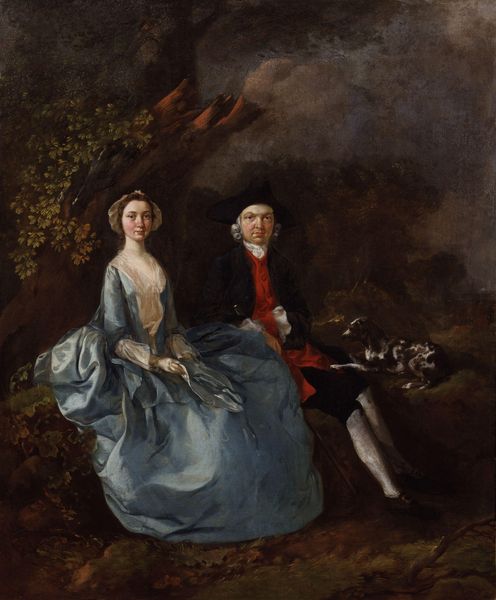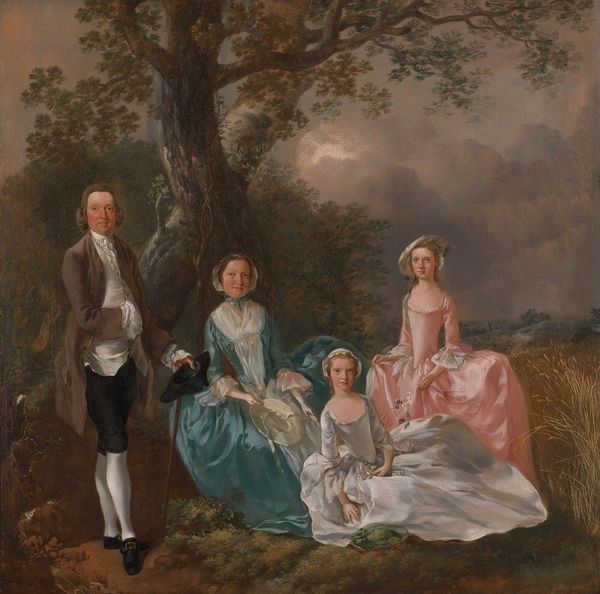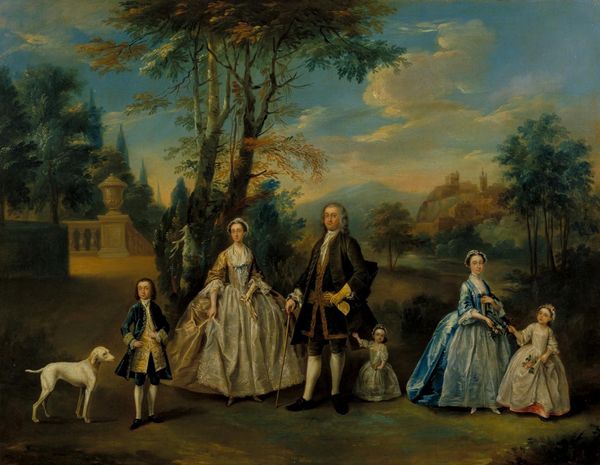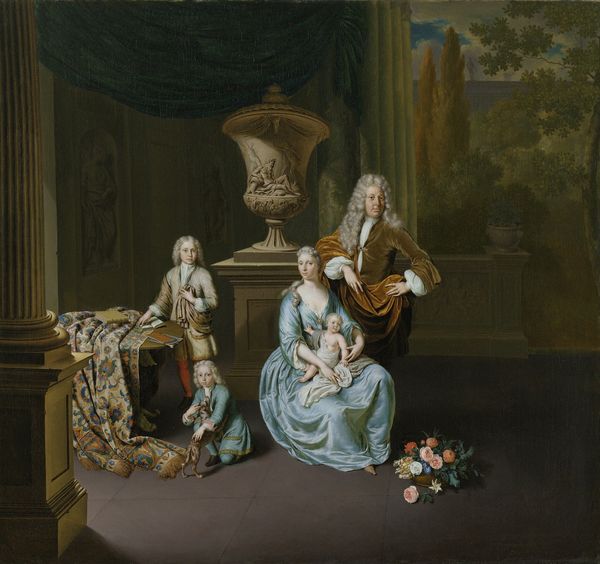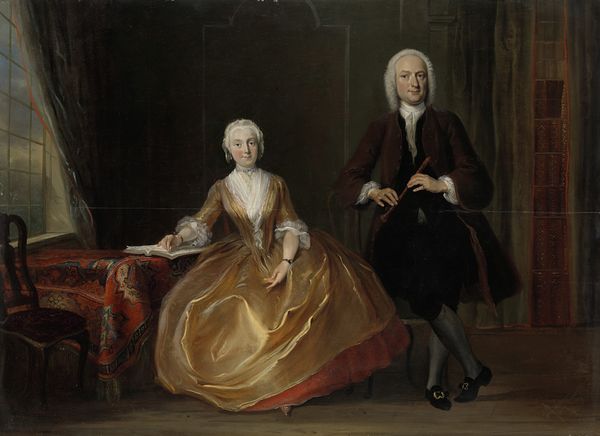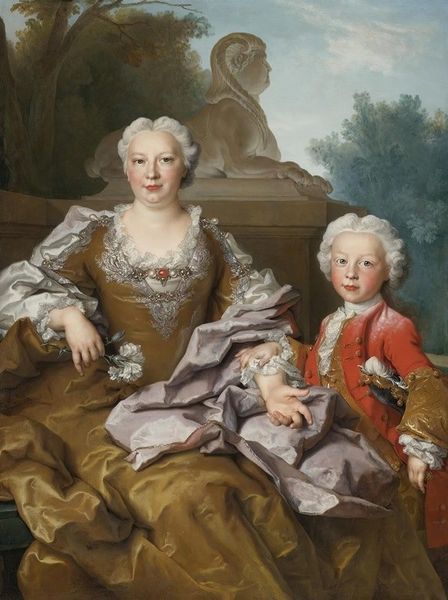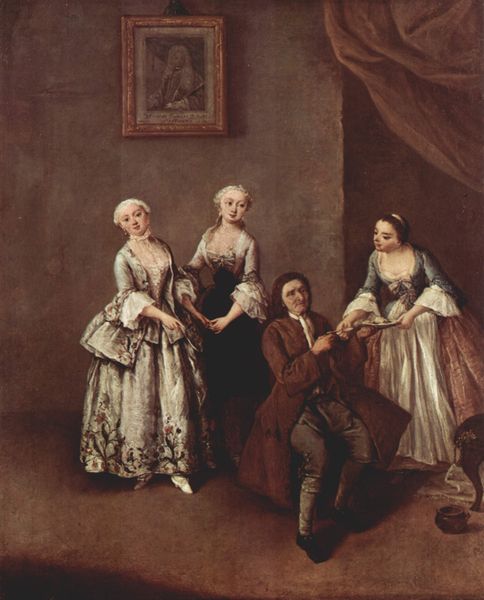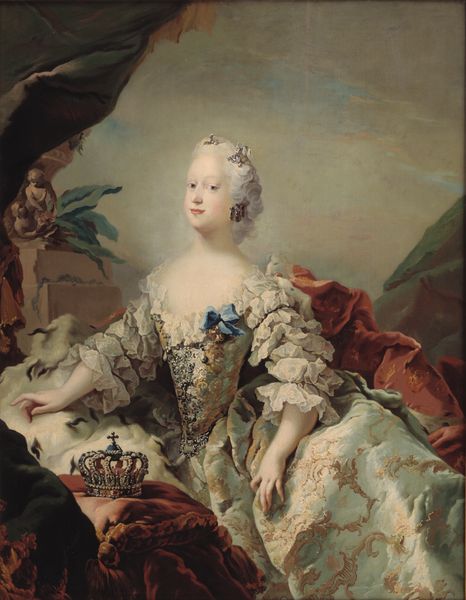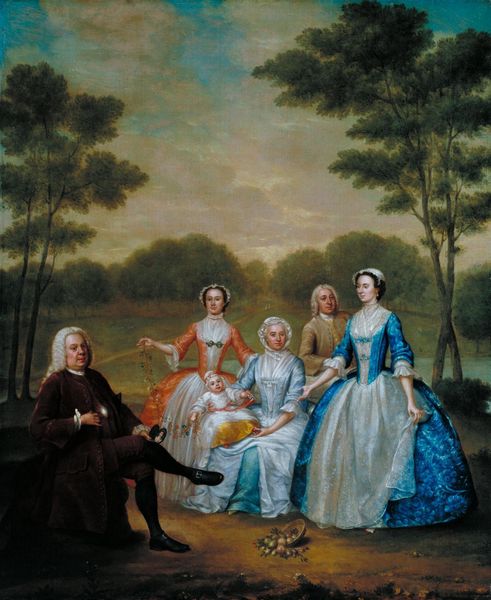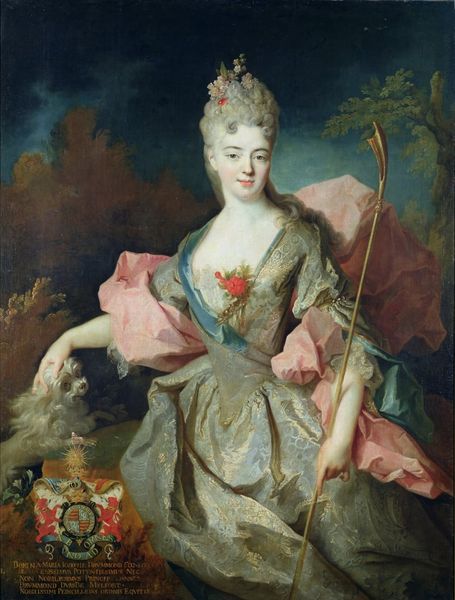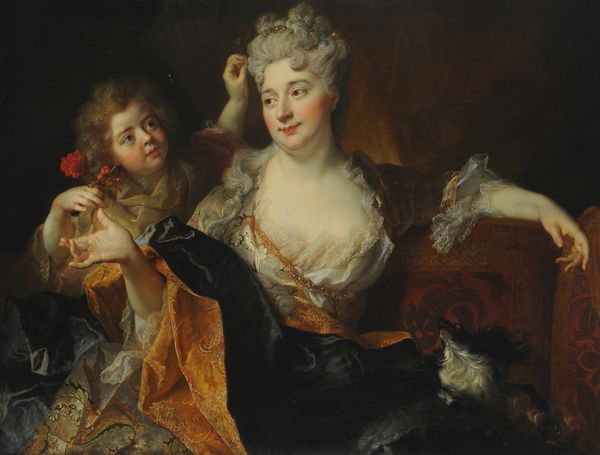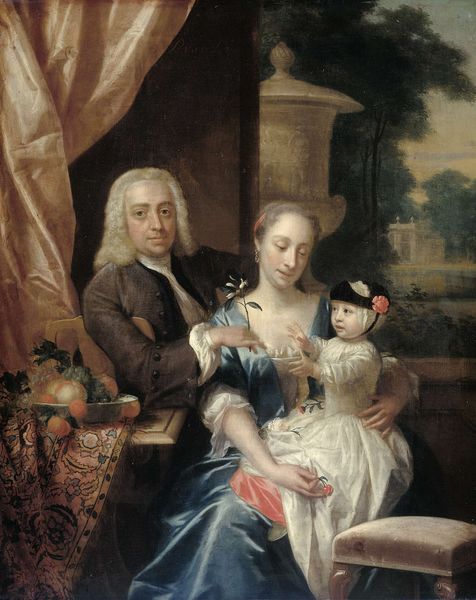
Count Giacomo Durazzo (1717–1794) and Ernestine Aloisia Ungnad von Weissenwolff (1732–1794) 1760 - 1763
0:00
0:00
Dimensions: 90 1/8 x 75 in. (228.9 x 190.5 cm)
Copyright: Public Domain
Editor: This is a double portrait by Martin van Meytens the Younger, "Count Giacomo Durazzo and Ernestine Aloisia Ungnad von Weissenwolff," painted in oil on canvas sometime between 1760 and 1763. There's almost a staged theatrical quality to this portrait, a constructed naturalism. How do you read this work? Curator: Look closely at the details: the expensive textiles, the hunting equipment casually placed. These are signifiers of wealth and status, certainly, but also of a specific kind of leisure, a performance of aristocracy tied directly to land and resources. Editor: Performance, exactly! It feels so consciously posed. Curator: Precisely. Think about the labor involved: the production of those elaborate garments, the management of the hunting grounds. What looks effortless is, in fact, deeply rooted in systems of production and consumption. Notice the materiality itself: the oil paint painstakingly layered to mimic textures, simulating silk, fur, skin… Each layer serves to not only represent an idea of social class, but also an access to tangible assets and the cost of reproducing those artifacts. Editor: So, you're saying that the painting itself becomes a commodity, reflecting and reinforcing social structures through its very materials? Curator: Indeed! Consider also the act of commissioning such a portrait. Who had access? What was the cost? Art becomes a tool within this class structure, reasserting economic power and also acting as collateral of their high-class style. Editor: That really shifts how I see it. I was focused on the visual harmony and the pastoral setting, but it's actually speaking to larger power dynamics. Curator: By understanding the materials and modes of production, the economic realities beneath the surface, we gain a far richer understanding of its historical context and significance. Editor: I see that now! Thanks. I'll never look at another Rococo portrait the same way again!
Comments
No comments
Be the first to comment and join the conversation on the ultimate creative platform.

